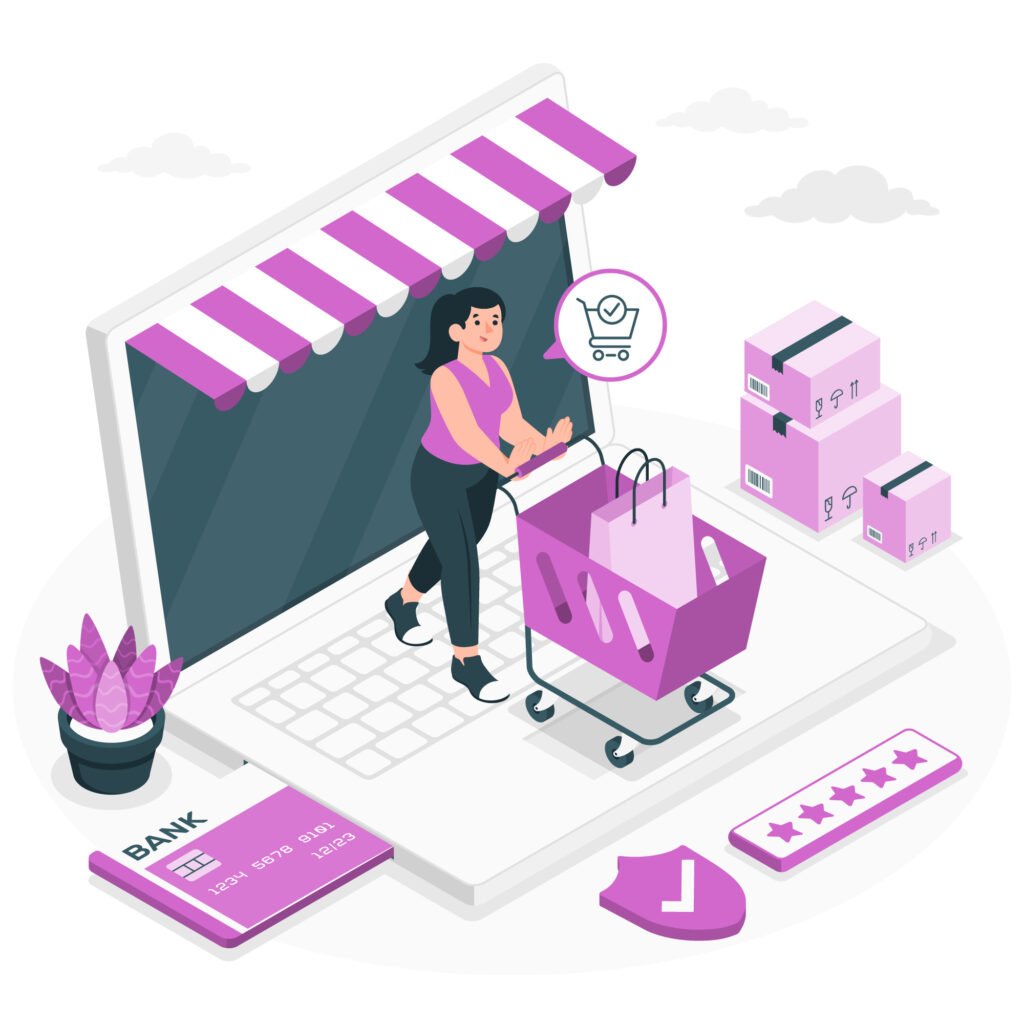
What is E-Commerce?
E-commerce, or electronic commerce, refers to the buying and selling of goods and services through the Internet. It involves a digital platform where businesses and consumers interact for transactions. E-commerce simplifies shopping by allowing customers to browse, compare, and purchase products online without the need for physical stores.
Key Features of E-Commerce:
Online Storefronts: Websites or apps showcasing products or services.
Digital Payments: Transactions completed through methods like credit cards, digital wallets (PayPal, Google Pay), or cryptocurrency.
Logistics & Delivery: Handling shipping and delivering products to customers.
Global Reach: Businesses can connect with customers worldwide, breaking geographical barriers.
Personalization: Tailored product recommendations and targeted marketing using customer data.
Initials: The e-commerce niche may require an initial investment to source products, set up a store, or manage inventory depending on the business model.
How Much Can You Earn with E-commerce Annually?
1. Beginner Level (First Year)
Earnings: $5,000 to $50,000 annually.
Key Activities: Testing niches, setting up an online store, and running initial ad campaigns.
2. Intermediate Level (1-3 Years)
Earnings: $50,000 to $150,000 annually.
Key Activities: Optimizing product selection, scaling ad campaigns, and refining logistics.
3. Advanced Level (3+ Years)
Earnings: $150,000 to $500,000+ annually.
Key Activities: Expanding product lines, leveraging advanced marketing strategies, and building a loyal customer base.
4. Established Businesses (Large Scale)
Earnings: $1 million to $10 million+ annually.
Key Activities: Operating large-scale online stores or marketplaces with a diverse range of products and a global audience.

Best Software for E-commerce
Here are some of the top software tools that can help you start, manage, and scale your e-commerce business effectively:
1. Shopify (All-in-One Solution)
Best for beginners and small to medium-sized businesses.
Offers an easy-to-use platform with customizable templates, payment integration, and powerful SEO tools.
2. WooCommerce (Customizable and Flexible)
Perfect for those using WordPress and needing full control over their store.
Highly customizable with extensive plugins and add-ons for scaling.
3. BigCommerce (Scalable for Growth)
It is ideal for mid-size to large businesses aiming for rapid growth.
Supports multi-channel selling and advanced analytics for scaling operations.
4. Oberlo (Dropshipping Focused)
A must-have for dropshipping businesses, integrating seamlessly with Shopify.
Simplifies product sourcing and automates order fulfillment.
Essential Equipment for E-commerce Professionals
Below is a list of basic and additional equipment you need to start E-commerce:
Basic Equipment (Must-Have)
Reliable Laptop or Desktop
Purpose: Essential for managing your online store, handling customer inquiries, and running marketing campaigns.
Popular Choices: Apple MacBook Pro, Dell Latitude 3550 Business Laptop
High-Speed Internet Connection
Purpose: Ensures seamless communication, website management, and efficient uploading/downloading of files.
Popular Choices: Google Wifi
Smartphone
Purpose: Useful for managing your business on the go, responding to customers, and using e-commerce apps.
Popular Choices: iPhone, Samsung Galaxy S24 Ultra
External Storage Drive
Purpose: For backing up important files, product images, and store data.
Popular Choices: SanDisk Extreme SSD, Samsung T7 SSD
Ergonomic Furniture
Purpose: Offers comfort during long work hours, boosting productivity and preventing strain.
Popular Choices: Marsail Ergonomic Office Chair, ErGear Height Adjustable Electric Standing Desk
Additional Equipment (Nice-to-Have)
Dual Monitors
Purpose: Improves productivity by allowing you to multitask efficiently, such as editing product pages and managing ads simultaneously.
Popular Choices: Samsung 34′ Odyssey, LG UltraFine
Noise-Canceling Headphones
Purpose: Helpful for focusing during virtual meetings or while working in noisy environments.
Popular Choices: Sony WH-1000XM5
Photo and Video Camera
Purpose: To create high-quality product images and videos to showcase on your website.
Popular Choices: Sony ZV-1, Canon EOS Rebel T7 DSLR
Printer
Purpose: Useful for printing shipping labels if you’re managing order fulfillment directly.
Popular Choices: DYMO LabelWriter
Learn E-commerce
YouTube Tutorial: COMPLETE Guide to Print on Demand for 2024 (21+ Hours)
Quick Tips for Learning E-Commerce Skills
Understand the Basics: Learn how e-commerce platforms like Shopify, Amazon, and Etsy work.
Study Consumer Behavior: Understand what motivates customers to buy online.
Learn Product Research: Practice identifying profitable products using tools like Jungle Scout or Helium 10.
Master Marketing Basics: Study digital marketing techniques, including SEO, social media ads, and email marketing.
Understand Payment Gateways: Familiarize yourself with systems like PayPal, Stripe, and others used for online transactions.
Develop Tech Skills: Learn the basics of website management, such as updating product listings and managing inventory.
Explore Data Analytics: Learn how to interpret sales data and customer insights to improve strategies.
Focus on Customer Service: Study how to handle inquiries, returns, and feedback effectively.
Learn Logistics and Fulfillment: Understand shipping processes, inventory management, and supplier relationships.
Take Relevant Courses: Enroll in online courses about e-commerce to gain structured knowledge and certifications.
